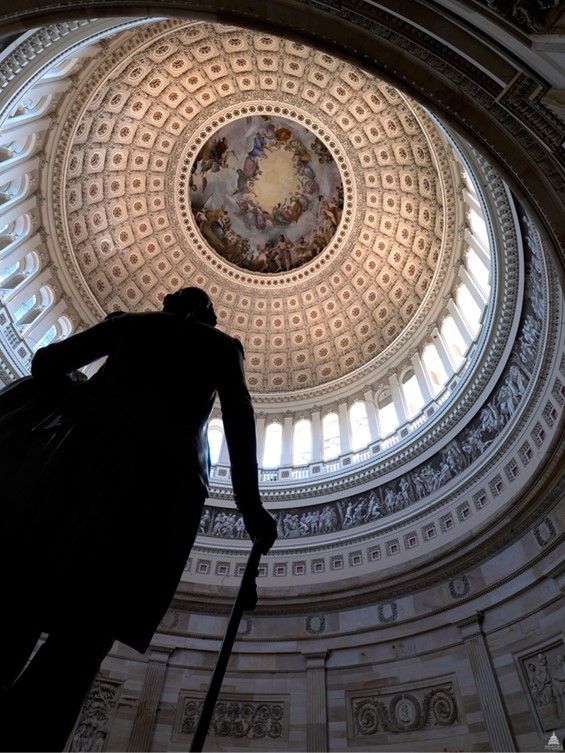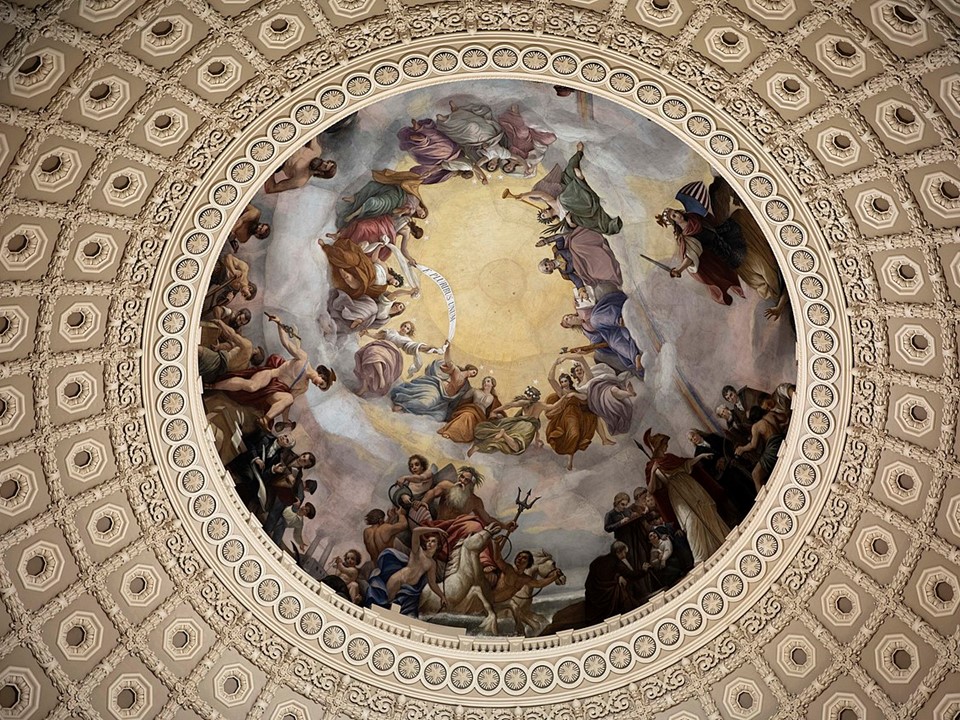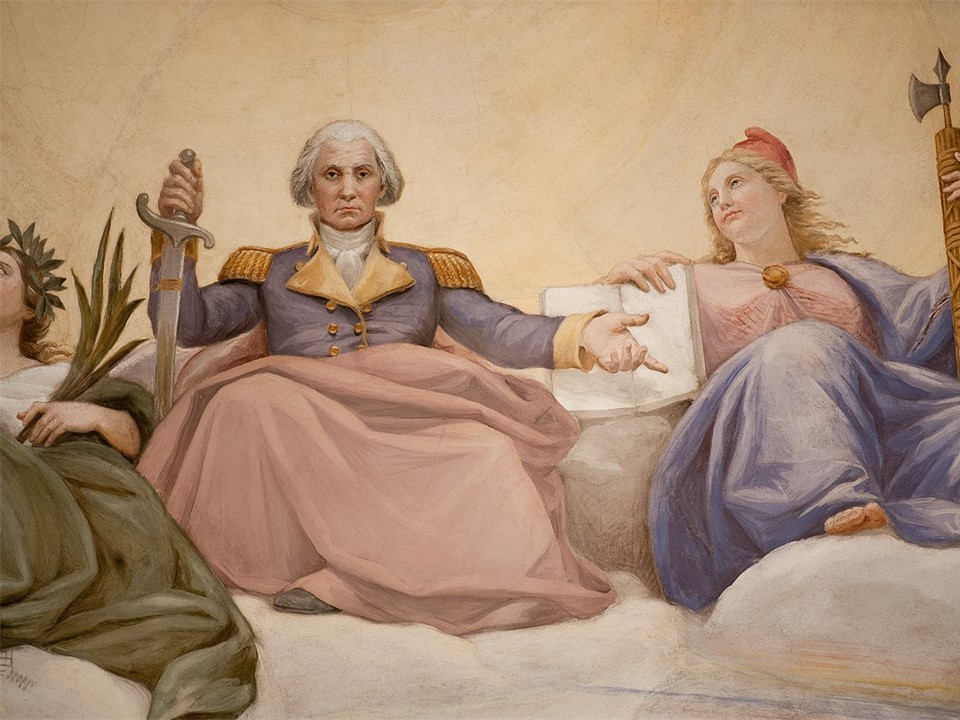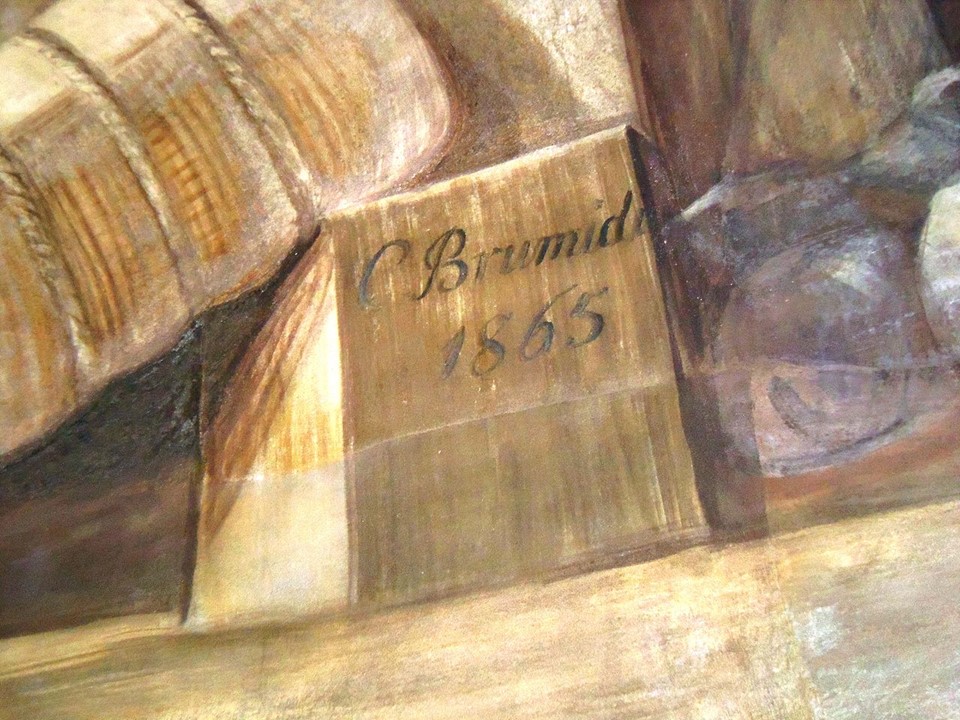
The Apotheosis of Washington, 1865, Fresco, 4,664 square feet, United States Capitol Building’s Rotunda, Washington, DC
Myrtle Cheney Murdock, the wife of John R. Murdock, the elected congressman from Arizona, was a teacher and an enthusiastic tour guide at the United States Capitol. She was amazed and dismayed at how little was known about Constantino Brumidi, the Greek/Italian/American artist of the Apotheosis of Washington on the Capitol’s Rotunda Dome. She frequently asked, “How can countless exquisite frescoes and paintings adorn our Capitol Building and yet the American people have little or no knowledge of their existence?” Researching for her Monograph on Constantino Brumidi, Michelangelo of the United States Capitol, she discovered the artist buried in an unmarked grave in Glenwood Cemetery. Myrtle Cheney Murdock’s research and dedication to Constantino Brumidi led to a posthumous appreciation of the artist’s artistic achievements and a commemorative plaque placed over his tomb in 1952, inscribed with a wish allegedly expressed by Brumidi back in 1855: “I have no longer any desire for fame and fortune. My one ambition and my daily prayer is that I may live long enough to make beautiful the Capitol of the one country on earth in which there is liberty.” https://www.washingtonpost.com/gdpr-consent/?next_url=https%3a%2f%2fwww.washingtonpost.com%2flocal%2fbrumidi-study-of-capitol-dome-painting-to-go-to-smithsonian%2f2012%2f03%2f05%2fgIQAclhhtR_story.html and https://www.senate.gov/reference/reference_item/Michelangelo_of_the_US_Capitol.htm

The Apotheosis of Washington, 1865, Fresco, 4,664 square feet, United States Capitol Building’s Rotunda, Washington, DC
Constantino Brumidi’s father was Stavros Brumidis from Filiatra in the Peloponnese, who, after the 1770 Orlov insurrection, a major precursor to the Greek War of Independence in 1821, and fearing Ottoman repercussions, fled Greece for Italy. Stavros Brumidis settled in Rome, married Anna Bianchini, opened a coffee shop to support his family and in 1805 became the father of a boy named Constantino. The boy was artistic and talented, studied Art for fourteen years at the Academy of St. Luke in Rome and became quite successful as a fresco painter working for the Vatican. In 1849 he was caught up in the Italian Risorgimento, he was arrested, accused of serious crimes and sentenced to eighteen years in prison. The Pope pardoned him but his only hope for freedom was to leave Italy for the United States. https://www.aoc.gov/explore-capitol-campus/art/constantino-brumidi

The Apotheosis of Washington (detai), 1865, Fresco, 4,664 square feet, United States Capitol Building’s Rotunda, Washington, DC
Brumidi reached the United States in September 1852 and for the next two years he worked, on private or church commissions in New York, Massachusetts and Mexico City. In December 1854 he met with Captain Montgomery C. Meigs, the Army Corps of Engineers officer who was supervising the construction of extensions to the Capitol. Impressed with Brumidi’s credentials, Meigs offered him the opportunity to paint for the United States Capitol through the 1860s and the 1870s. His major contribution is the 1865 Apotheosis of Washington and the frieze of the new Capitol Dome.
For a PowerPoint on the Apotheosis of Washington, please… check HERE!

The Apotheosis of Washington (detail), 1865, Fresco, 4,664 square feet, United States Capitol Building’s Rotunda, Washington, DC